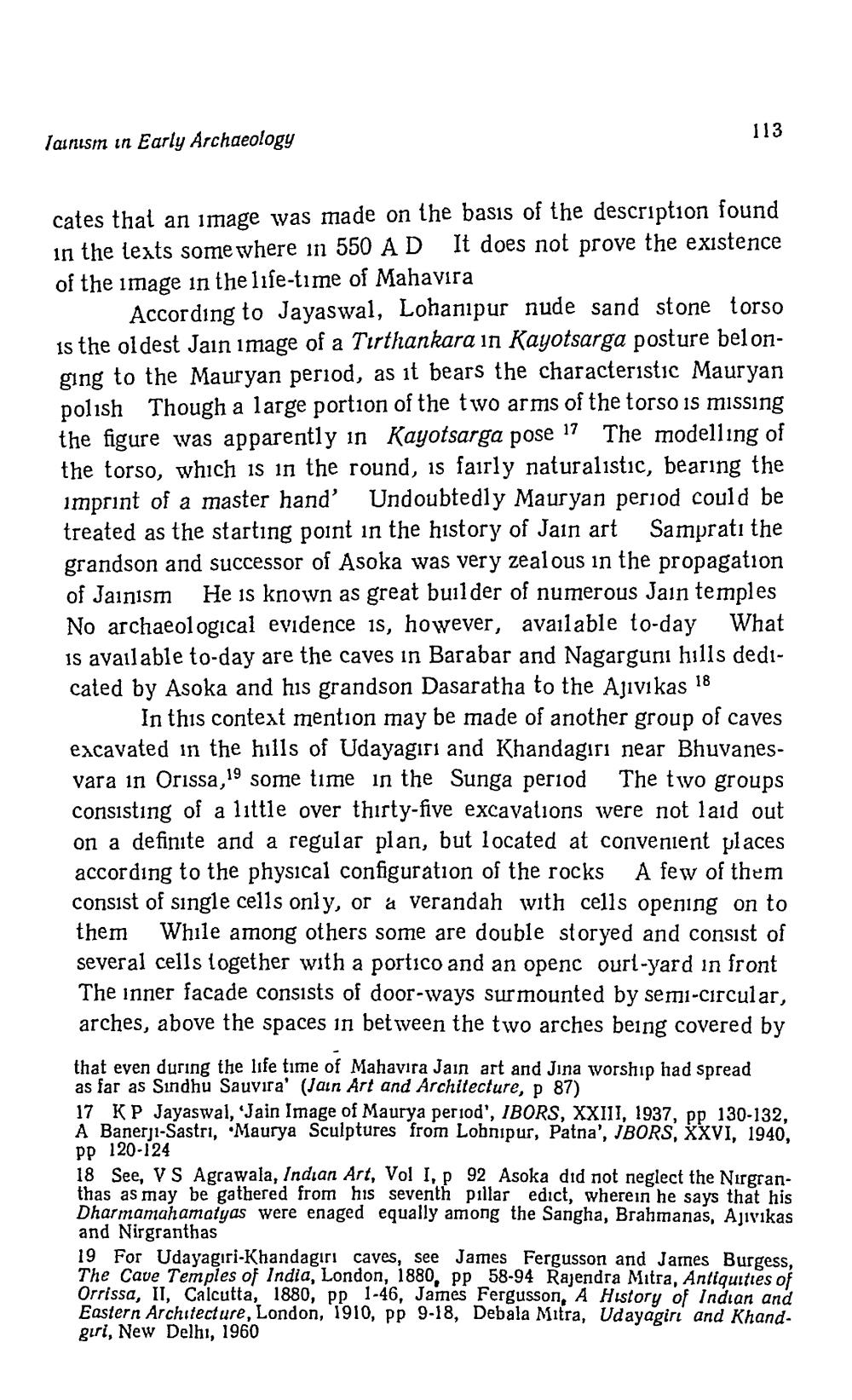________________
Jainism in Early Archaeology
113
cates that an image was made on the basis of the description found in the texts some where in 550 A D It does not prove the existence of the image in the life-time of Mahavira
17
According to Jayaswal, Lohanpur nude sand stone torso is the oldest Jain image of a Tirthankara in Kayotsarga posture belonging to the Mauryan period, as it bears the characteristic Mauryan polish Though a large portion of the two arms of the torso is missing the figure was apparently in Kayotsarga pose The modelling of the torso, which is in the round, is fairly naturalistic, bearing the imprint of a master hand' Undoubtedly Mauryan period could be treated as the starting point in the history of Jain art Samprati the grandson and successor of Asoka was very zealous in the propagation of Jainism He is known as great builder of numerous Jain temples No archaeological evidence is, however, available to-day What is available to-day are the caves in Barabar and Nagarguni hills dedicated by Asoka and his grandson Dasaratha to the Ajivikas
18
In this context mention may be made of another group of caves excavated in the hills of Udayagırı and Khandagırı near Bhuvanesvara in Orissa,19 some time in the Sunga period The two groups consisting of a little over thirty-five excavations were not laid out on a definite and a regular plan, but located at convenient places according to the physical configuration of the rocks A few of them consist of single cells only, or a verandah with cells opening on to them While among others some are double storyed and consist of several cells together with a portico and an openc ourt-yard in front The inner facade consists of door-ways surmounted by semi-circular, arches, above the spaces in between the two arches being covered by
that even during the life time of Mahavira Jain art and Jina worship had spread as far as Sindhu Sauvira' (Jain Art and Architecture, p 87)
17 KP Jayaswal, Jain Image of Maurya period', IBORS, XXIII, 1937, pp 130-132, A Banerji-Sastri, Maurya Sculptures from Lohnipur, Patna', JBORS, XXVI, 1940, pp 120-124
18 See, VS Agrawala, Indian Art, Vol I, p 92 Asoka did not neglect the Nirgranthas as may be gathered from his seventh pillar edict, wherein he says that his Dharmamahamatyas were enaged equally among the Sangha, Brahmanas, Ajivikas and Nirgranthas
19 For Udayagiri-Khandagiri caves, see James Fergusson and James Burgess, The Cave Temples of India, London, 1880, pp 58-94 Rajendra Mitra, Antiquities of Orrissa, II, Calcutta, 1880, pp 1-46, James Fergusson, A History of Indian and Eastern Architecture, London, 1910, pp 9-18, Debala Mitra, Udayagiri and Khandgiri, New Delhi, 1960




